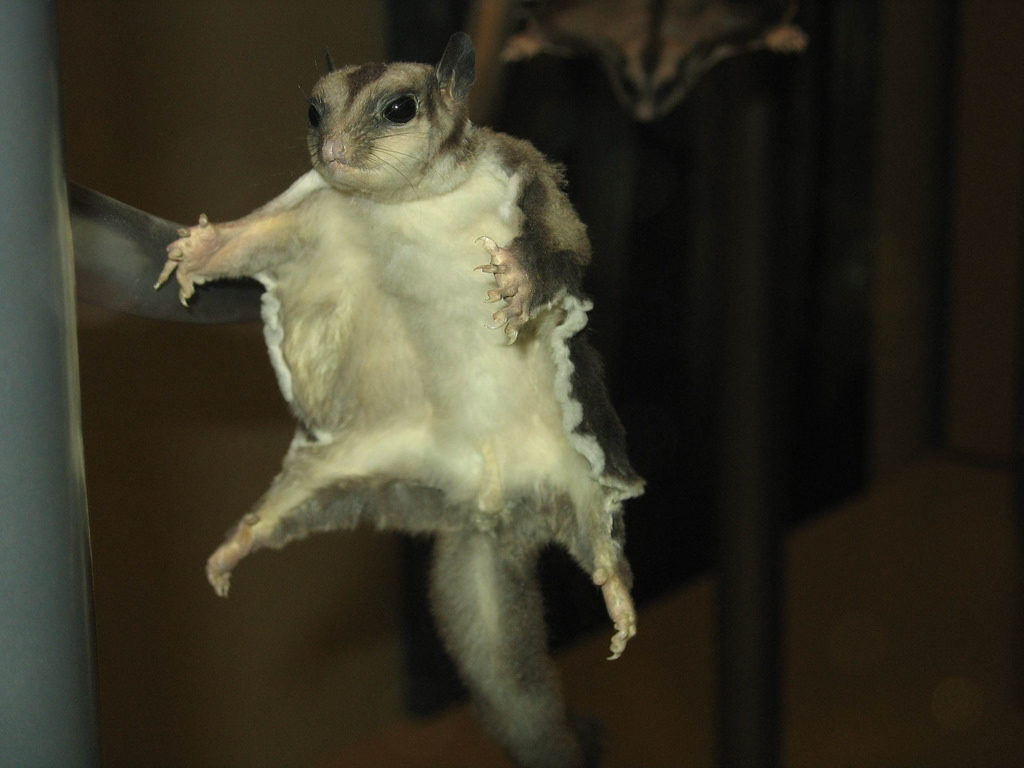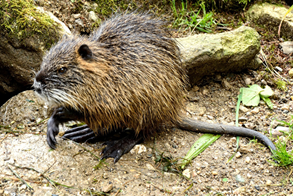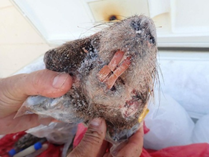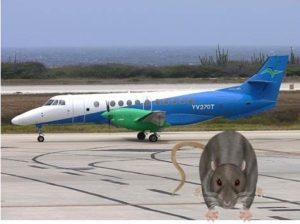
Flying squirrel is the type of rodent which can be more appropriately called as gliding squirrels, although their name is flying squirrel in real they don’t fly but glide. They glide using a thin skin between their front leg and back leg that allows them to glide through the air from one tree to another tree. In a single glide, a flying squirrel can cover more than 150 feet. They have originated around 19 to 20 million years ago. The life expectancy of the flying squirrel is about 6 years.
Flying squirrels are nocturnal and are known to make huge noise especially during the night between the sunsets and have a high sense of smell. They can enter the attics through small cracks and crevices by chewing up the area for wide and large entry point as they are smaller than the gray squirrel. The typical habitat of the flying squirrel is inside hardwoods.
Let’s have look at some of the evidence,
Students report flying squirrel infestation in Terraces
The Office of Facilities is working to address student reports that flying squirrels have been scurrying around in the Terraces Residence Halls at Ithaca College.
The reports of flying squirrels were in Terraces 6 and 9. Facilities addressed the problem by sealing off where the squirrels had entered, said Ernie McClatchie, executive director in the Department of Facilities, Grounds and Transportation. Facilities first received reports of flying squirrels in Terrace 9 in mid-November and from Terrace 6 in early December. McClatchie said this is the first time he is aware that squirrels have accessed the dorms and were reported to Facilities.
One of the students who filed a report to Facilities, sophomore Zachary Ashcraft, said the issue first arose Nov. 26 when he heard a rustling noise coming from under his bed. Two weeks later, he heard the same sound again, and Ashcraft and a friend used a granola bar to lure out and catch a glimpse of what he thought was a mouse.
Ashcraft’s friend called the Office of Public Safety and Emergency Management, who told Ashcraft that there had been issues of flying squirrels in Terrace 6. Ashcraft was told by Public Safety to put in a work order with Facilities. Facilities put a trap in Ashcraft’s room three days later, and the trap failed to catch the squirrel, Ashcraft said. Facilities came back a day later to fill in the hole the squirrels were entering in from, and Ashcraft has not had issues with flying squirrels since.
Sophomore Julia Driscoll also said she experienced issues with flying squirrels; though, for her, the response from Facilities was not as fast. Driscoll said that the Sunday after Thanksgiving break, Nov.
Atkins’ roommate saw four squirrels in his room at one time Dec. 3, and Atkins said he was told by maintenance that the squirrels got in through the area surrounding the pipes in the walls. 25, she heard what sounded like a mouse, which was caught the day after. That same day, however, while she was at her desk, a flying squirrel jumped onto it and ran off.
Hungry
flying squirrels strip, eat bark from pecan trees
Lenny Wells
Many growers have recently called about the
bark being stripped from their trees. This normally occurs on smooth-barked
limbs or central leaders 3 inches or less in diameter. The culprits here are
flying squirrels.
When food sources become scarce, flying squirrels will strip the bark off
smooth barked branches to feed on the tree’s cambium. If they completely girdle
the limb or central leader at any point on the tree, the limb or leader will
die from that point upward. If the damage does not completely girdle the limb
or tree, the wound normally heals over with time. Flying squirrels are
nocturnal. Their home range is usually no more than an acre so damage tends to
be isolated to certain spots in the orchard.
We at C Tech Corporation make use of Mother Nature’s gift of senses given to these pests.
RodrepelTM is the best solution to keep rodents away from human contact.
RodrepelTMis
a low-toxic, and low hazard rodent aversive. This product works on the mechanism
of repellence. It does not harm or kill the target species but generate fear or
trigger temporary discomfort within the pests that keeps the pests away from
the application.
The unpleasant experience with the product is imprinted within animal’s memory and
passed on its progeny.
RodrepelTM is available in liquid concentrate which can be diluted in paints and can be applied on the surface. It is easy to apply and dries quickly and does not volatilize.
The
product is available in lacquer form which is a direct application. The lacquer
can be applied on the furniture and other wooden accessories. It can be applied
on already installed wires and cables, polymeric utility pipes and equipment.
The product is compatible with most of the surfaces like metal, wood, concrete,
polymer; ceramic etc.
The product available in the form of masterbatch can be incorporated into the
polymeric applications like wires and cables, pipes, equipment and accessories while
they are manufactured.
Our newly developed product is in the form of a spray, RodrepelTM rodent repellent spray can be used by anyone and sprayed on the infected area. The product dries quickly and hence does not require much time to deliver the results.
The product is compliant with RoHS, RoHS2, EU-BPR, APVMA, REACH and is FIFRA exempted.
If you are facing problems from these pests then contact us on:
technical.marketing@ctechcorporation.com
Also
visit ourwebsites:
http://www.ctechcorporation.com/
http://www.rodrepel.com/
http://www.termirepel.com/
http://www.combirepel.com/
Follow our Facebook pages at:
1]
https://www.facebook.com/Combirepel-411710912249274/
2] https://www.facebook.com/Termirepel-104225413091251/
3] https://www.facebook.com/Rodrepel-120734974768048/
Follow us on our Twitter pages at:
1]
https://twitter.com/rodrepel
2] https://twitter.com/termirepel
3] https://twitter.com/combirepel

 They are back!
They are back! Wearing chest-high waders, biologist Sean McCain tries to tiptoe to the edge of a marsh in California’s Central Valley. A biologist with the state Department of Fish and Wildlife, McCain squints as he searches the shoreline.
Wearing chest-high waders, biologist Sean McCain tries to tiptoe to the edge of a marsh in California’s Central Valley. A biologist with the state Department of Fish and Wildlife, McCain squints as he searches the shoreline. Aviation is one of the most ‘global’ industries: connecting people, cultures and businesses across continents. Aviation has continued to expand. Aviation provides a rapid worldwide transportation network, which makes it essential for global business.
Aviation is one of the most ‘global’ industries: connecting people, cultures and businesses across continents. Aviation has continued to expand. Aviation provides a rapid worldwide transportation network, which makes it essential for global business. Olaf Scholz actually wanted to return home quickly from the IMF meeting in Bali – just in time for the Bavarian election. But the Vice Chancellor’s jet was not ready to go. The reason: damage caused by hungry rodents.
Olaf Scholz actually wanted to return home quickly from the IMF meeting in Bali – just in time for the Bavarian election. But the Vice Chancellor’s jet was not ready to go. The reason: damage caused by hungry rodents.